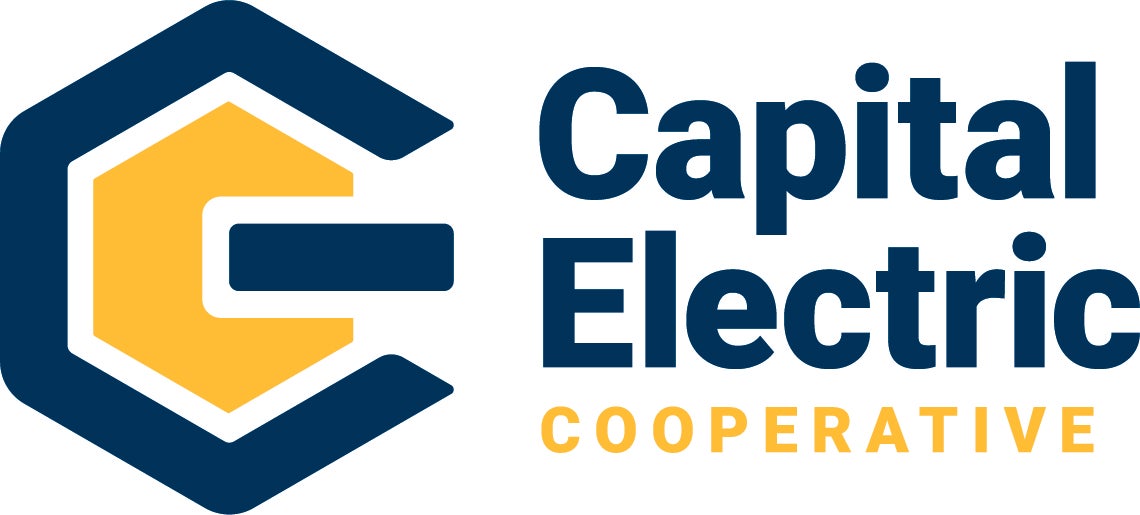Understanding Capital Credits
Capital credits represent each member’s ownership of the cooperative. They are the margins credited (or allocated) to the members of the cooperative based on their purchases from the cooperative the previous year. These margins are used by the cooperative as capital to operate the business for a period of time.
Capital credits should not be confused with profits, which are a return on capital. Retirement of capital credits is a return of member-furnished capital. Cooperatives exist not to make a profit but to provide low-cost electricity.
Allocations are made annually for each member, based upon the amount you paid to the cooperative the previous year. An allocation is the amount set aside into a separate account to be used as operating capital for reliability improvements and maintenance over a period of years. Your allocation notice will be mailed to you each spring.
A retirement is the amount you receive back as a capital credit refund. It is a percentage of your total capital credit balance. The amount to retire is decided by the board of directors annually, based upon the financial condition of the cooperative.
No. Allocations are used as the operating capital of the cooperative. They are not available until a retirement is approved by the Board of Directors. They base their decision on the financial condition of the Cooperative.
Remember that capital credit funds are used for reliability improvements and maintenance—and these are long term investments. Capital credits cannot be refunded all at once because they help the cooperative remain financially sound, thereby ensuring a stable, reliable electric service for the benefit of the members we serve. The federal government and the Cooperative’s other lenders require that a certain portion of the electric system be funded by member equity.
Capital credit allocations are pooled together and used as operating capital so that we can serve our members with reliable power. These funds pay for a portion of the power reliability improvements and maintenance such as replacing power lines or building substations.
When the board of directors has determined the financial condition allows a retirement of capital credits, the board of directors can approve a portion of the capital credit funds to be retired (or refunded) to the membership.
Checks are made available at the annual meeting and are subsequently mailed out.
Cooperatives operate on a set of seven principles that include a self-supporting system of operations. This system calls for a portion of any funds left over at the end of the year after all expenses are covered to be allocated to those who used and paid for their services, the member-owners.
Capital credit allocations help a cooperative qualify for cooperative status under federal income tax law, which reduces cost to the member-owners.
Your capital credit allocation balance remains intact until the Board of Directors approve a general retirement or until the conditions of a special retirement are met. Remember that the electrical distribution system is a long-term asset that your capital credit dollars help to build. Those assets cannot be liquidated when a member moves. Instead, time will be needed to build the capital credit account of the new member that takes over your residence.
In the event a member dies, the capital credits in the member’s account become a part of the estate. In order to assist the member’s heirs or beneficiaries in closing the estate, the capital credits are retired after being adjusted for the time value of money. Upon request by the personal representative of the estate, or the heirs of a deceased member where no personal representative has been appointed, the cooperative will provide a listing of the documentation required to retire the account.
In the event of death of either partner where joint membership was held, the capital credit balance will be moved into the remaining partners name and will remain on the normal retirement schedule.
All members of the cooperative earn capital credits whether it be a person, trust or a business. It all depends on how the membership is opened at the cooperative. Capital credits are allocated to entities in the same manner as they are to a natural person. Refunded capital credits may or may not be taxable based on the member treatment of the prior payments of electrical service on their tax returns. However, as we cannot give tax advice and each entity’s situation is different, we encourage you to contact your tax advisor if you have a specific question.
Corporations, partnerships and trusts receive refunds of their allocated capital credits when the board of directors authorizes a general retirement. When a corporation, partnership or trust decides to dissolve or liquidate its assets, capital credits are not payable at this time. Members will need to contact their attorney or tax accountant to determine their options for assigning the capital credit assets for future general retirements.
When the owner of a business is operating as an individual under an assumed business name passes away, the capital credits may be payable to the estate of the deceased natural person owning the business. It is important to retain your tax documents showing the business operating as an individual under an assumed business name, such as an IRS 1040 with the Schedule C.cc
